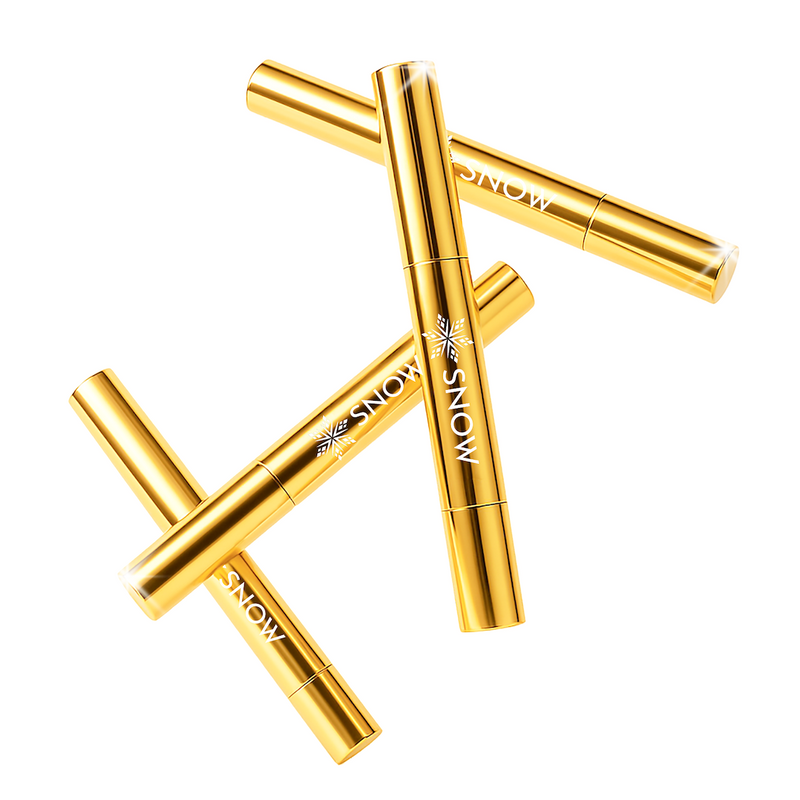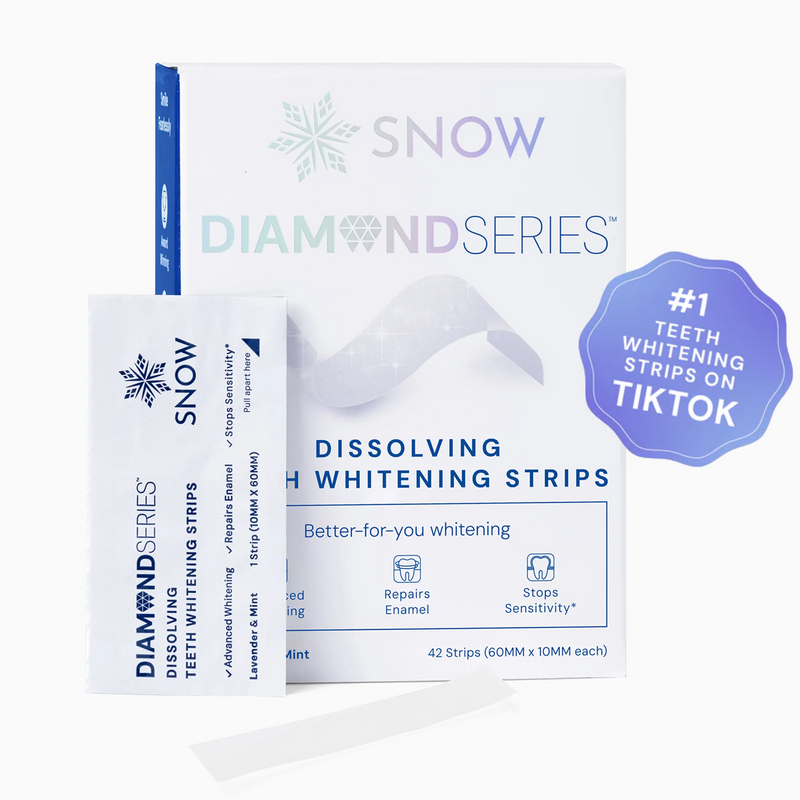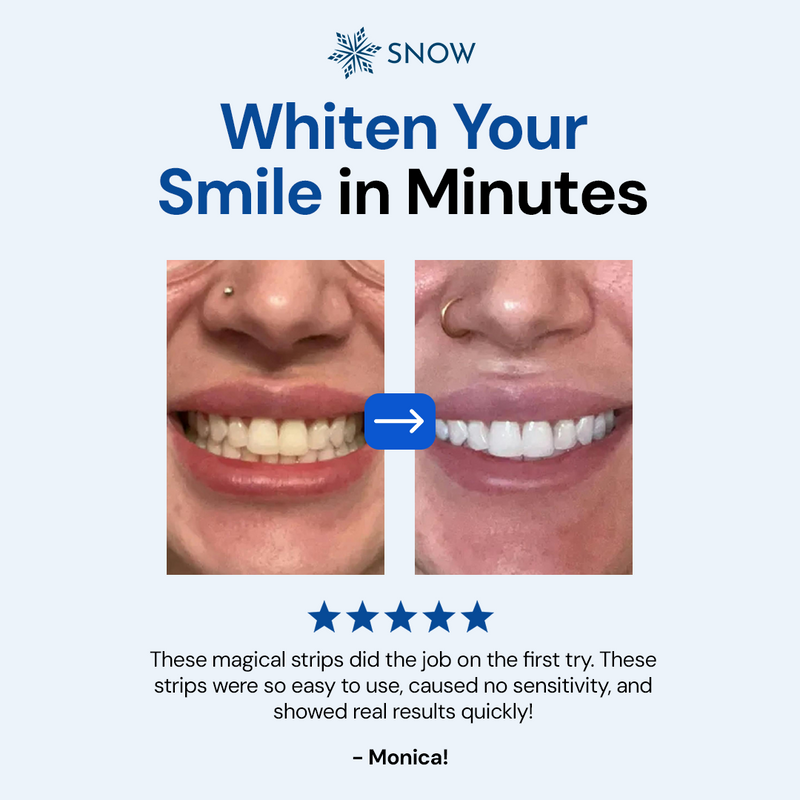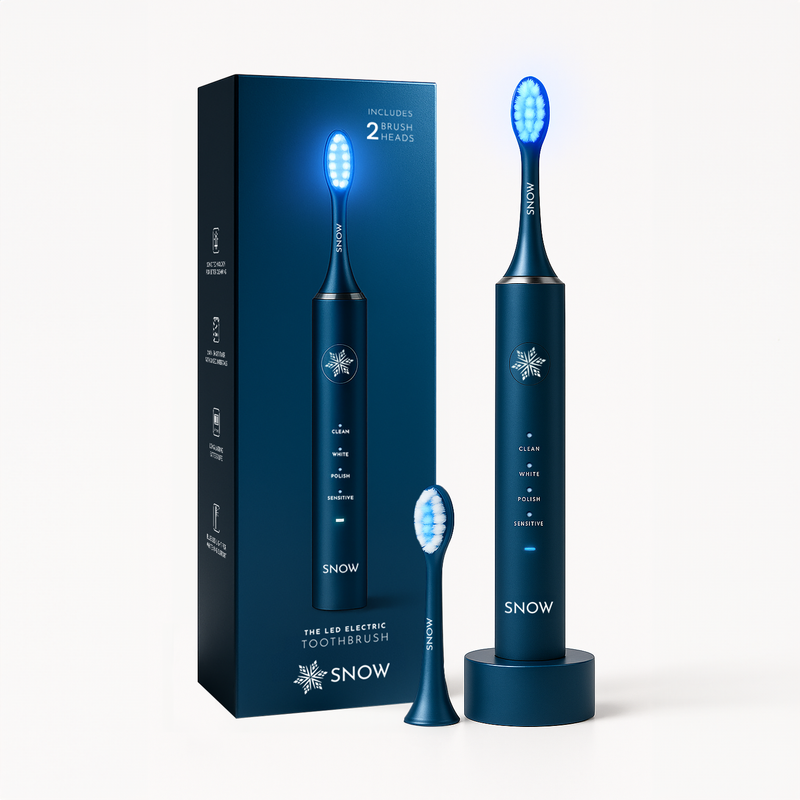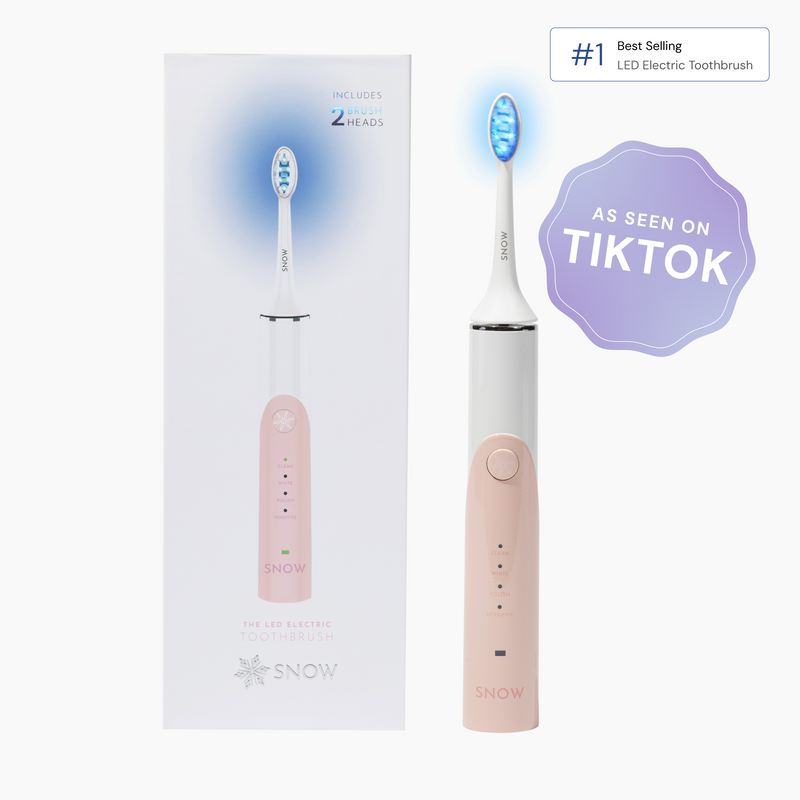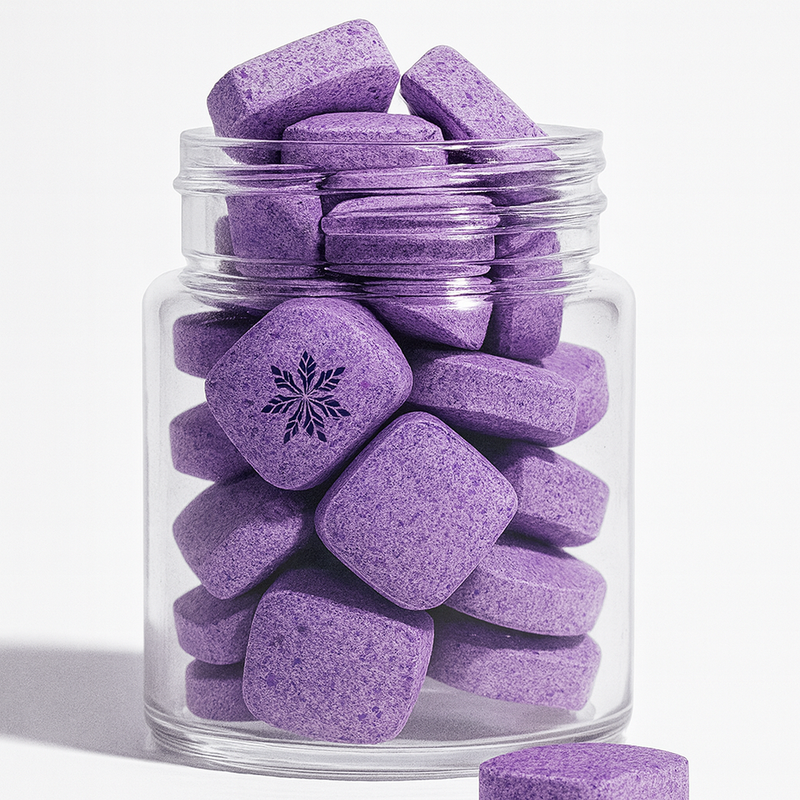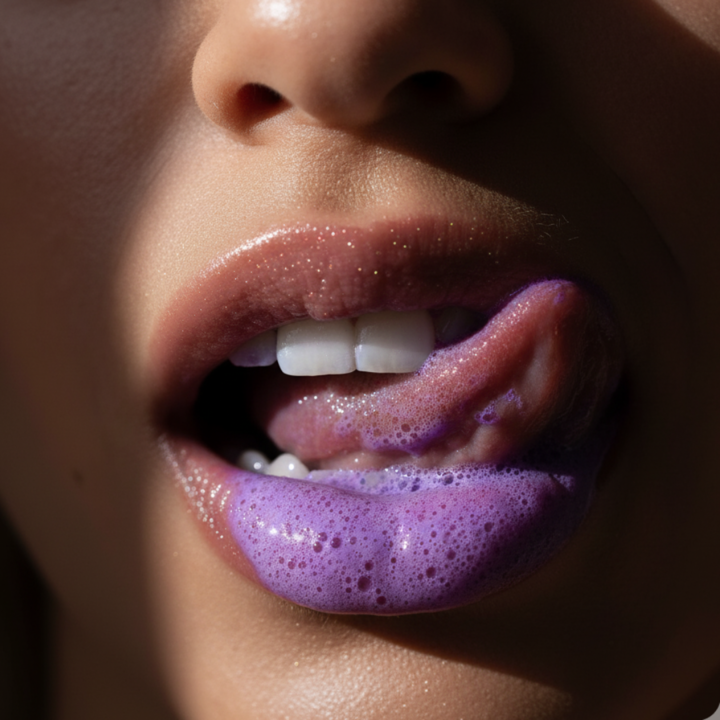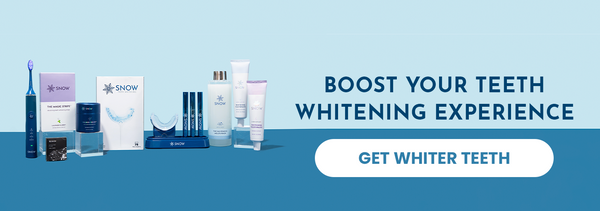Professional teeth whitening is one of the most popular cosmetic dental treatments in cosmetic dentistry. Professional teeth whitening treatments provide a rapid, non-invasive, and cost-effective option to improve one's smile. Whitening (or bleaching) procedures are universally loved by men and women equally, and there are options to suit every budget and time-frame.
Solutions to stubborn stains exist, whether in the shape of a professional one-hour professional in-office teeth whitening session at a dentist facility or cosmetic salon, home-use bleaching kits purchased at your local drugstore, or something in the middle such as a reputable online retailer.
Almost everyone who chooses a teeth whitening treatment notices a modest to a significant increase in the brightness and whiteness of their smile. However, it is not a permanent remedy to discoloration and tooth staining. It requires maintenance or "touch-ups" to provide a long-lasting effect.
What Factors Contribute to Tooth Discoloration?
Tooth discoloration can occur for a variety of reasons. One of the most prevalent is exposure to some foods and beverages (surface stains).
Teeth's holes, ridges, and grooves absorb color from meals and liquids. Over time, this creates yellowing, dark and white patches.
Surface stains are the simplest to remove with frequent teeth whitening.
The following are the most prevalent meals and beverages which generate surface stains:
- Coffee
- Black tea
- Dark colored soda
- Pinot Noir
- Dark fruit
- Juices made from fruits
Other factors that might influence tooth color include:
- Genetics and diseases
- Medical procedures
- Tooth decay
- Restorations of Aging Amalgam
- Medications, particularly tetracycline
- Tobacco consumption
- Fluoride
These other stains are usually darker than those generated by darker-colored meal eating habits.
What is the process of teeth whitening treatment?
To eliminate stains from enamel, teeth whitening employs a harmless bleach called carbamide peroxide. Carbamide peroxide is a hydrogen peroxide derivative put on to your teeth for a specific period of time and then treated with a high-intensity laser whitening tool that penetrates deep into the enamel. The bleach then penetrates the enamel of the teeth and enters the inner dentin layer to reverse tooth discoloration. The bleach breaks up the dark molecules of tooth discoloration deep inside the teeth, causing the result to look like you have whiter teeth.
One of the most effective ways to whiten teeth is in-office professional teeth whitening. Several in-office whitening solutions, such as one-hour professional whitening or a dual-process procedure, are available.
In most professional teeth whitening settings, a whitening gel is applied to the teeth. The active component is usually hydrogen peroxide, which lifts discoloration particles from the teeth. Water, oxygen, and radicals are formed as hydrogen peroxide decomposes. These free radicals' responses will remove stains off teeth and make them appear whiter.
Finally, your outcomes are determined by the treatment you receive, which differs from case to case.
The quantity of hydrogen peroxide—the higher the concentration, the stronger the whitening product—and the length of time the whitening solution is isolated on the teeth are the criteria that affect how effectively a whitening gel product works.
However, a significant factor in cosmetic treatment for teeth whitening is the cost for many people. Cosmetic dentists often do a great job whitening teeth, but the price is also high. Remember, while having teeth professionally whitened tends to do a better job, you are paying for many unnecessary extras such as staff, rent, and insurance. Thankfully, several whitening options for you do not involve the hassle and cost of in-office procedures.
Over-The-Counter Teeth Whitening Costs
Over-the-counter whitening is much more straightforward and economical than a dental office.
While these otc products and take-home whitening kits demand more effort than dental whitening at a cosmetic dentist, the treatment is cheaper than professional teeth whitening costs.
Professional whitening at a dentist's office requires less maintenance than OTC whitening, but again, at usually a much higher cost.
Over-the-counter teeth-whitening products include some of the following products:
Whitening strips
Whitening strips are available online and in shops. Strips cost $10 to $75 for each bundle.
The process is a simple teeth whitening method. For whitening strips, you put them on and leave them in for up to 30 minutes. However, some higher-end strips will dissolve in as little as 15 minutes.
Generally, whitening strips work. Some have trouble keeping them on. Using whitening strips might cause sensitive teeth, and some people do not like the mild discomfort, but it should be noted that virtually all whitening treatments involve some discomfort.
Whitening trays
This solution gives professional-level results at home. Evidence shows that in-home whitening trays outperform many other whitening options but also come at a higher cost.
Custom whitening trays can get expensive and cost $100-$600, but you do get nominally better results and whiter teeth.
You'll need a dental impression for some of the higher-cost whitening trays. For this, you go to a licensed dentist, where they make you custom mouth-fitted trays.
Teeth whitening trays and bleaching agent are delivered.
Non-custom whitening trays are available. These cost $10 to $50 and don't fit as well but work almost as well as a fitted tray. Some of the lower-cost non-custom trays cause uneven whitening or messy application. However, with the better brands, the tray is made of soft material, and the gel fills in smoothly to avoid this problem.
At-home whitening trays also often make teeth sensitive. Desensitizing and protective gel exist to help, and many dental tray companies offer them. Teeth whitening trays at home may be done without discomfort beyond having a device in your mouth for up to an hour.
Tooth whitener
Applying a whitener to tooth enamel through toothpaste, mouthwash, or other whitening agents is the easiest and often the lowest teeth whitening cost option. Whitening toothpaste contains minimal quantities of peroxide and is used daily.
Depending on brand and whitening process and degree, whitening toothpaste costs $3 to $15, but some can cost as high as $50.
Whitening toothpaste doesn't affect tooth color or lighten stains. They comprise polishing abrasives and stain-removing peroxide.
This approach is excellent for light surface stains or whitening teeth color after laser whitening or other teeth whitening options.
Many kinds of toothpaste contains blue covarine, a pigment consistently deposited and maintained on pellicle-coated tooth surfaces, resulting in a color shift and, as a result, an increase in the measurement and perception of dental brightness. This chemical makes teeth appear less yellow without eliminating stains.
Using whitening toothpaste regularly will show results in 2 to 6 weeks.
LED Teeth Whitening
At-home LED whitening cosmetic treatment kits are a relatively new addition to whitening options. These kits are popular and can vary widely in price from $50-$300 and up.
With LED teeth whitening, non-invasive LED light speeds up the teeth whitening process.
LED whiteners not only erase stains but they strengthen teeth. They whiten quickly and effectively compared to at-home and in-office treatments.
The teeth are coated with a bleaching chemical before LED whitening (usually peroxide-based). LED light activates the whitening ingredient and starts the chemical process.
This contact penetrates the enamel, lifts stains, and works better than surface stain whitening products.
LEDs are efficient because they start at full power with no warm-up period.
Professional Teeth whitening prices
Professional tooth whitening procedures cost extra. Dental office teeth whitening costs $250 to $1,180 each session, sometimes more.
Professional treatments by a dental professional include services such as:
ZOOM
Zoom whitening brightens teeth by up to 90%. It takes 1 hour in a dentist's office and is FDA-approved.
Zoom provides less-aggressive home whitening. You'll wear gel-filled trays for 12 days of In-home treatment after visiting a dentist.
Zoom treatments are quick, simple, and convenient but can be relatively expensive. Zoom might induce tooth sensitivity.
Zoom costs $300 to $600.
Kor Whitening
Kor restores oxygen to teeth, eliminating discoloration. It is a teeth whitening method that helps tetracycline-discolored teeth.
First, before you use Kor, you have to visit a dentist. However, home care is provided. You'll wear the trays monthly to maintain results after initial treatment.
Kor's whitening trays fit well over teeth, which dentists prefer. This prevents saliva from diluting whitening gel. Refrigerating the gel maintains its effectiveness.
However, Kor teeth whitening costs more than Zoom at $500-$1,000 for treatment.
Laser teeth whitening
Laser whitening is a cosmetic dentistry treatment that employs bleaching gel and lasers to minimize tooth discoloration. This might make your teeth appear whiter and brighter. Laser teeth whitening is more effective than at-home procedures such as whitening strips.
Laser teeth whitening is a cosmetic technique. Dental insurance often does not cover this sort of expense. This implies you'll have to pay for it yourself. Depending on your dentist and region, a single session might cost anywhere from $100 to $450.
Keep in mind that laser teeth whitening will require three to four treatments. If you choose laser whitening, you should budget between $400 to $1800 or more for your teeth whitening costs.
Risks
When protocols are followed precisely, teeth whitening treatments are deemed safe for oral health. However, there are several hazards to bleaching that you should be aware of:
Bleaching might temporarily enhance your sensitivity to warmth, pressure, and touch. This is more likely to happen when a greater bleach concentration is applied during in-office whitening. Some people get sudden shooting pains ("zingers") along the center of their front teeth. Individuals with gum disease, significant fissures in their teeth, or leaking caused by poor restorations are most vulnerable to whitening discomfort.
It has also been noted that, according to the Journal of the American Dental Association, redheads, even those with no additional risk factors, are more likely to have dental sensitivity and zingers. Whitening sensitivity usually lasts for a day or two, but it might last up to a month in certain situations. Some dentists prescribe a toothpaste containing potassium nitrate or protective gel for sensitive teeth.
More than half of people who use peroxide whiteners develop gum irritation due to the bleach concentration or contact with the trays. Such discomfort can remain for several days after bleaching is stopped or reduced peroxide content.
Bleach does not affect restoration such as bonding, dental crowns, or veneers. It retains their original color while the surrounding teeth are whitened. This results in what is commonly referred to as "technicolor teeth."
What foods should you avoid after bleaching?
Avoiding foods that might discolor your enamel is the best method to retain your beautiful teeth. Any food or drink that would stain a white shirt would also stain your teeth, such as berries, red wine, and sauces. Sticky candies and sticky carbs such as spaghetti and bread will also adhere to the teeth, causing surface stains. Choose raw, crisp fruits and vegetables like carrots, celery, or apples, which can mechanically remove surface stains from teeth.
Caveats
In addition to the risk mentioned earlier, the following considerations should be made before having teeth whitened:
- There is no way to achieve "unnaturally" white teeth by bleaching.
- Whitening results are not entirely visible until two weeks after bleaching. This is a crucial factor to consider if you are preparing to get ceramic restorations and want to ensure that the color matches your newly bleached teeth.
- Suppose cosmetic bonding, porcelain veneers, or other restorations are part of your treatment plan. In that case, they should not be installed for at least two weeks after bleaching to assure adequate adhesive bonding, function, and shade matching.
- Tooth-colored restorations will almost certainly need to be replaced following bleaching to avoid the technicolor appearance.
- Recessed gums frequently have yellowish root surfaces visible at the gum line. It has been tough to bleach that yellow tint.
- Pregnant or breastfeeding women should avoid tooth whitening. The effects of ingested bleach on the pregnancy or newborn are unknown.
Frequently Asked Questions
Does insurance cover Professional Teeth Whitening?
Whitening is seen as a cosmetic procedure. This indicates that its primary goal is to improve the look of teeth. It is not medically required, so patients typically pay teeth whitening costs.
The patient is liable for the whole expense of this procedure, as is the case with most non-medically essential therapies.
Some dental facilities, however, provide payment options to make teeth whitening cost operations more accessible.
There are also some financing alternatives for whitening and other cosmetic operations at the dentist, such as do-it-yourself whitening products to whiten teeth and even coupons.
You'll still have to pay for the services, but you may spread the payments out over time. Interest can be applied or not.
Is it worth it to get your teeth professionally whitened?
Professional teeth whitening is safe, effective, and performed under the supervision of a dentist. In most circumstances, the extra cost of going to the dentist is worth it to receive long-lasting, safe results, but only if you can afford the time and whitening costs associated with visiting a dentist.
How long do professionally whitened teeth last?
Because there are so many whitening methods, average tooth whitening results can last anywhere from six months to three years. However, in most situations, consumers see improvements that last around a year.
What are dental shade guides?
Shade guides in dentistry are made up of conventional or custom-made color standards that mirror the color of tooth structures. They are utilized to determine a color match with natural teeth visibly.
Does laser work better?
Many functional and aesthetic operations, including dentistry solutions, have been transformed by laser technology. Laser teeth whitening is a very successful method for removing stains and discoloration from the teeth, resulting in whiter and brighter teeth than previously. However, like many in-office procedures, the cost is often much higher.
Summary
If you need results quickly, laser whitening and Zoom whitening may whiten your teeth by many shades in just one hour. A bleaching kit provided by your dentist is a less expensive option to attain good results while still being monitored by a dental specialist.
All of these professional teeth whitening techniques at the dentist might be costly. Those looking for a less expensive solution to whiten their teeth might use a home whitening device instead. Other kinds of kits are available, but we recommend Snow, of course, to ensure maximum effectiveness and satisfaction with our range of products that boost the teeth whitening experience, including lab-made mouth trays that firmly fit around your teeth.
Other popular home whitening kits, such as Snow, employ a different technique that does not require custom trays. But remember that not everyone is a suitable candidate, so consult with your dentist first.

















































